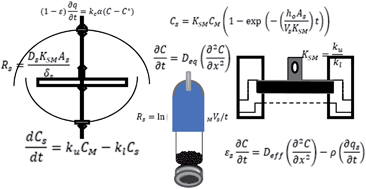Theory and modelling approaches to passive sampling
Abstract
Designs and applications of passive samplers for various environmental compartments have been broadened significantly since their introduction. Understanding the theory behind passive sampling is essential for proper development of sampling methods and for accurate interpretation of the results. Theoretical underpinnings of passive sampling have been explored using different approaches. The aim of this review is to describe passive sampling theory and modelling approaches presented in the literature in a manner that allows researchers to obtain comprehensive understanding of them and to recognize the assumptions behind each approach together with their applicability to a given passive sampling technique. A common approach originates from Whitman's two-film theory and produces an exponential model that describes the entire passive sampling process. This approach, however, is based on several assumptions including linear exchange kinetics between the sampled medium and the passive sampler. Two-phase air passive samplers with a well-defined barrier are commonly modeled based on the zero-sink assumption, which assumes efficient trapping of analytes in the receiving phase. This assumption may become invalid under various scenarios; consequently, other approaches to modelling have been introduced including simulation of the sampling process by approximate temporal-steady states in hypothetical segments in the adsorption phase. Another approach uses dynamic models to determine accumulation of analytes in passive samplers. Dynamic models are capable of describing mass accumulation in the passive sampler, its transient response, and its response to fluctuations in environmental concentrations. Finally, empirically calibrated models, attempting to simplify the process of passive sampling rate determination, are also presented. In general, dynamic models are used to establish a profound understanding of the sampling process and analyse the applicability of the simpler models and their assumptions, while the simplified models are desirable and practical for most users. Nonetheless, due to the advancement in the computational tools, application of the dynamic models could be made simple and user-friendly.

- This article is part of the themed collection: Best Papers 2019 – Environmental Science: Processes & Impacts


 Please wait while we load your content...
Please wait while we load your content...